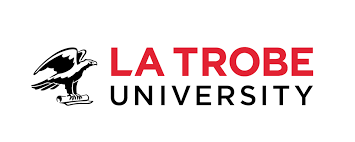La Trobe University: Australian dragons reveal kinky sex gene
Published today in PNAS, the study showed dragon lizards are determined to be male or female by epigenetic rather than genetic differences – that is, changes in the gene’s chromosomal neighbourhood rather than the gene itself.
The study was co-authored by Professor Jenny Graves at La Trobe University, along with collaborator Professor Arthur Georges and members of his University of Canberra team, including first authors Dr Xiuwen Zhang and Dr Susan Wagner.
Professor Graves said the research team were astounded by the discovery.
“We looked at the genes of the sex chromosomes in both sexes, and could find no DNA sequence that distinguished them from each other. So we couldn’t understand why they weren’t acting in the same way,” Professor Graves said.
“It was particularly odd, because the two sex chromosomes look quite different under the microscope. The female-specific (W) chromosome has lots of highly repetitive (junk) DNA that stains brightly.
“Our breakthrough was the realisation that this repetitive DNA might distort the W chromosome so that the sex gene was read incorrectly,” Professor Graves said.
“So rather than sex being determined by the base sequence of a sex gene – like in humans, and every other animal we know about – in the dragon lizard it was about the gene’s kinky chromosomal ‘neighbourhood’.”
Professor Graves said the discovery illustrates how the Earth BioGenome Project will change the way that scientists do biological research.
Professor Graves is an author on two PNAS papers, also published today, that chart the aims and progress of this grand international project to sequence the genomes of all 1.8 million species of animals, plants, fungi and single celled organisms with a nucleus.
“We would never have discovered this unique way of doing genetic sex determination if we’d just looked at humans, mice and zebrafish! Peculiar species like dragon lizards can provide new information about genes and gene regulation,” Professor Graves said.
“The Earth BioGenome Project will give us critical information about all complex life on the planet, how it works and how it evolved. Importantly, it will help us identify and save endangered species, and monitor the ecological systems that generate clean air, water and food that sustain human life.”
Professor Graves said, with current forecasts indicating that the earth will lose 50 per cent of biodiversity by the end of this century, the race is on to complete the 10-year project.
“By the end of 2022 we will have sequenced 3,100 species, up from a few hundred just a few years ago. We’re a good way towards our Phase 1 goal of sequencing the 9,400 species that represent each taxonomic family.”
Professor Graves said the international team is not daunted by the goal of creating a digital library of the genomes of 1.8 million species.
“It sounds impossible but, because of huge leaps in technology, it will actually cost less and take less time than it took to sequence the human genome 20 years ago,” Professor Graves said.

